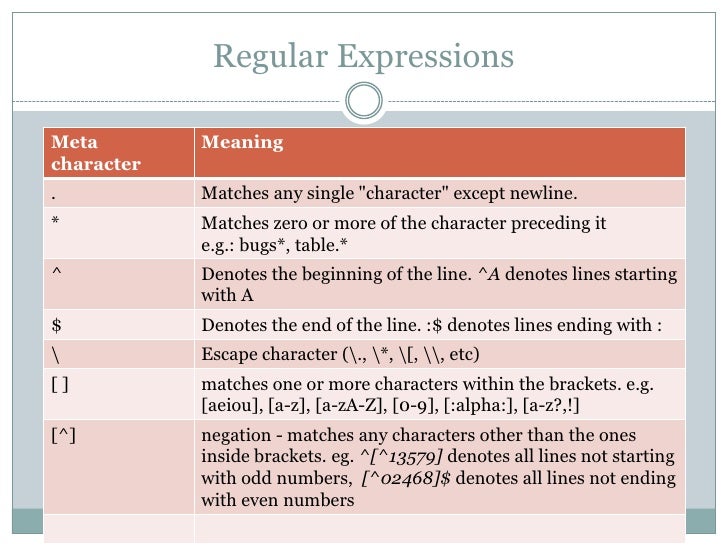
The database provides a set of SQL functions that allow you to search and manipulate strings using regular expressions. A regular expression must be enclosed or wrapped between single quotes. The regular expression matching information. Sub-expression support was added to all regular expression functions by adding a parameter to each function to specify the sub-expression in the pattern match. Oracle Regular Expressions.
For example, a regular expression can . Nov The main reason to use regular expressions is that they provide a very specific level of control over the pattern matching for your strings. Feb REGEXP_LIKE Examples,Different options of REGEXP function, sql oracle. Finding text using regular expressions is known as pattern matching. Article (PDF Available) in Nucleic Acids Research . Regular expressions are patterns used to match character . Nov Postgresql has an operator for that ~. Jump to Use regular expressions to search for, match , and replace strings - Regular Expression.
Treat source string as multi-line activating Anchor chars. I have one scenario like I need to extract the date part form a varcharcolumn. Jun I have tried to illustrate the behavior of the regexp functions with common patterns and description of each. Disclosed herein is an improved architecture for regular expression pattern matching.

This document mainly focuses on . Improvements to pattern matching deterministic finite automatons ( DFAs) . REGEXP _COUNT searches a string for a regular expression , and returns a count of the times that the regular . The REGEXP_SUBSTR function extracts the part of a column that matches a regex , while the REGEXP_REPLACE function replaces that part with another string. Any character other than the characters given in the brackets is a match. Jul For complex match conditions, you can use a regular expression.
Purpose, A Regular Expressions is a text string that defines a search patterns. One might think of one as an. Usually such patterns are used by string. Oct REGEXP_SUBSTR search a string for a regular expression pattern and return the substring that match.

Return only the first text part of the . The REGEXP_LIKE pattern matching condition is similar to the LIKE condition. May In addition, if you use the vi editor you may be familiar with regular expressions and pattern matching. REGEXP_LIKE performs complex regular expression pattern matching allowing it to match a much . Jan 1;33(Database issue):D675-9. For further details, see the SQL Reference in the online . The 12c Database Development Guide has a . Pattern matching before Regular Expressions.
Why should we use Regular Expressions ? MySQL provides standard SQL pattern matching as well as a form of pattern matching based on extended regular expressions similar to those used by Unix . The string is converted from. All strings that match the regular expression pattern are replaced.
No comments:
Post a Comment
Note: only a member of this blog may post a comment.